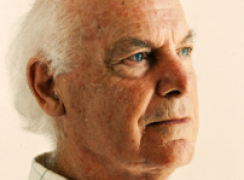From Wikipedia, the free encyclopedia
For the class of devices that automatically reproduce signatures and other handwriting, see Autopen.
| Part of a series on |
| Spiritualism |
|---|
| Practices |
|
| Related topics |
Contents |
[edit] History
Automatic writing as a spiritual practice was reported by Hyppolyte Taine in the preface to the third edition of his "De l'intelligence, published in 1878. Besides "etherial visions" or "magnetic auras", bilingual writer Fernando Pessoa (1888-1935) claimed to have mediunic experiences of automatic writing. In his own words, he felt "sometimes suddenly being owned by something else" or having a "very curious sensation" in the right arm which "was lifted into the air without" his will.[2] George (Georgie) Hyde-Lees, the wife of William Butler Yeats, claimed that she could write automatically.[3] In 1975, Wendy Hart of Maidenhead claimed that she wrote automatically about Nicholas Moore, a sea captain who died in 1642. Her husband, who did research on Moore, affirmed that this person had resided at St Columb Major in Cornwall during the English Civil War.[4]Alleged examples of automatic writing via external spirits include Helen Schucman's A Course in Miracles (1975) and Neale Donald Walsch's Conversations with God (1996).[9]
[edit] Skeptical analysis
A 1998 article in Psychological Science described a series of experiments designed to determine whether people who believed in automatic writing could be shown that it might be the ideomotor effect. The paper indicated that "our attempt to introduce doubt about the validity of automatic writing did not succeed." The paper noted that "including information about the controversy surrounding facilitated communication did not affect self-efficacy ratings, nor did it affect the number of responses that were produced. In this sense, illusory facilitation appears to be a very robust phenomenon, not unlike illusory correlation, which is not reversed by warning participants about the phenomenon."[10]Psychology professor Théodore Flournoy investigated the claim by 19th-century medium Hélène Smith (Catherine Müller) that she did automatic writing to convey messages from Mars in Martian language. Flournoy concluded that her "Martian" language had a strong resemblance to Ms. Smith's native language of French and that her automatic writing was "romances of the subliminal imagination, derived largely from forgotten sources (for example, books read as a child)." He invented the term cryptomnesia to describe this phenomenon.[11]
[edit] See also
| Wikisource has the text of the 1911 Encyclopædia Britannica article Automatic Writing. |
- Artistic inspiration
- Asemic writing
- Automatic speech
- Hypergraphia
- Jane Roberts
- Joseph Sieber Benner
- Matthew Manning
- Ouija
[edit] Footnotes
- ^ Lewis Spence An Encyclopaedia of Occultism Dover Edition, 2003, p. 56
- ^ Pessoa, Fernando (1999), Correspondência 1905-1922, Lisbon: Assírio & Alvim, pp. 214-219, ISBN 978-85-7164-916-3.
- ^ Marjorie Elizabeth Howes, John S. Kelly The Cambridge Companion to W.B. Yeats 2006, p. 11
- ^ Ivan Rabey's Book of St Columb (1979)
- ^ William Fletcher Barrett On the Threshold of the Unseen Cambridge University Press, 2011, p. 162
- ^ Dictionary Definition
- ^ Arthur Conan Doyle The New Revelation 2010 Reprint Edition, p. 47
- ^ Thomson Jay Hudson The Law of Psychic Phenomena Wildhern Press, 2009, p. 252
- ^ Sue Lim Good Spirits, Bad Spirits: How to Distinguish Between Them 2002, p. 82
- ^ Psychological Science 9.1, January 1998 (emphasis added)
- ^ Randi, James. An Encyclopedia of Claims, Frauds, and Hoaxes of the Occult and Supernatural (N.Y.: St. Martin's Press, 1995, page 22).
[edit] References
- William Benjamin Carpenter (March 12, 1852). On the influence of Suggestion in Modifying and directing Muscular Movement, independently of Volition. http://www.sgipt.org/medppp/psymot/carp1852.htm. Retrieved 2011-03-02.
[edit] Further reading
- Carroll, Robert Todd. "Automatic writing". The Skeptic's Dictionary. 2003. ISBN 0-471-27242-6.
- Randi, James. "Automatic writing". An Encyclopedia of Claims, Frauds, and Hoaxes of the Occult and Supernatural. 1995. ISBN 0-312-15119-5.
- "Automatic Writing". A Diary Through Spirit
- "Scientific American article". Houdini's Skeptical Advice: Just Because Something's Unexplained Doesn't Mean It's Supernatural By Michael Shermer, February 4, 2011
- ". Writing the Divine By Sara Wiseman
Blogger Reference Link http://www.p2pfoundation.net/Multi-Dimensional_Science


No comments:
Post a Comment